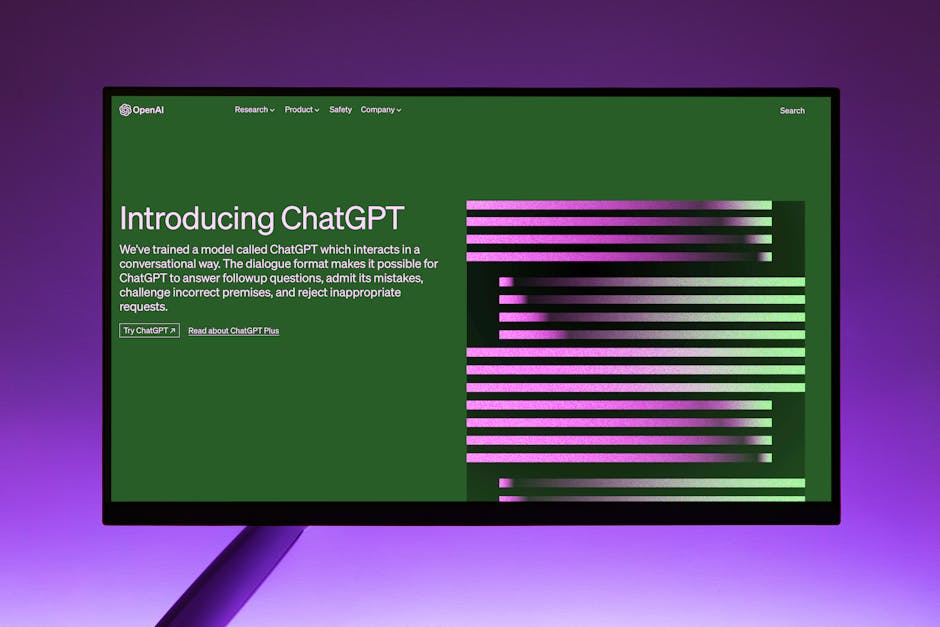Top 10 NLP Tools for Smarter Requirement Gathering
The theory that effective requirement gathering is the cornerstone of successful project delivery has long been upheld in the realm of software development.
In today’s digital age, the advent of top-notch Natural Language Processing (NLP) tools has revolutionised this process, offering unparallelled accuracy and efficiency.
This article presents an insightful compilation of the top 10 NLP tools, including GPT-3, IBM Watson, and Google Cloud Natural Language API, to empower professionals with the means to gather requirements smarter and faster.
Key Takeaways
- GPT-3 and IBM Watson are advanced NLP platforms that revolutionised language generation and understanding capabilities.
- Google Cloud Natural Language API and Amazon Comprehend offer powerful sentiment analysis and entity recognition features.
- SpaCy and NLTK are widely-used NLP libraries for named entity recognition, text classification, and other tasks.
- Microsoft Azure Text Analytics provides sentiment analysis, language identification, and entity categorisation for smarter requirement gathering.
GPT-3

GPT-3 has revolutionised natural language processing by enabling more advanced and nuanced language generation and understanding. Its capabilities are remarkable, as it can understand and generate human-like text based on the input it receives. GPT-3 stands for Generative Pre-trained Transformer 3, and it is the third iteration of the GPT series developed by OpenAI.
The capabilities of GPT-3 are vast and have significant implications for NLP applications. It can be used for a wide range of tasks, including language translation, text summarisation, and language generation. Its ability to understand context and generate coherent and contextually relevant responses has made it a valuable tool for various NLP applications.
In the context of requirement gathering, GPT-3 can be leveraged to analyse and interpret user input, generate detailed requirements documentation, and even assist in creating user stories. Its advanced language processing capabilities enable more accurate and efficient gathering of requirements, leading to better communication and understanding between stakeholders and development teams.
IBM Watson

IBM Watson, with its robust natural language processing capabilities, has also played a significant role in advancing language understanding and generation, complementing the progress made by GPT-3. IBM Watson’s Natural Language Understanding (NLU) capabilities have proven to be instrumental in various domains. Here are some key aspects of IBM Watson that evoke awe and curiosity in the audience:
-
Watson Assistant’s ability to understand and respond to user queries with a human touch, enhancing user experience and engagement.
-
IBM Watson’s remarkable language translation capabilities, breaking down communication barriers across different languages and cultures.
-
The empathy-infused chatbot experiences created by leveraging IBM Watson’s NLP capabilities, enhancing customer satisfaction and support interactions.
-
Watson’s contextual analysis prowess, enabling it to comprehend nuanced language and provide accurate contextual responses.
-
The groundbreaking advancements in healthcare, where IBM Watson’s NLP capabilities are revolutionising medical data analysis and personalised patient care.
IBM Watson continues to push the boundaries of what’s possible with NLP, making it a compelling choice for organisations seeking to leverage the power of language understanding and generation.
Google Cloud Natural Language API

The Google Cloud Natural Language API offers a range of powerful features for natural language processing (NLP), making it an invaluable tool for smarter requirement gathering.
From entity recognition to sentiment analysis, the API provides comprehensive NLP capabilities that can significantly enhance the understanding of requirements.
Google Cloud NLP Features
Google Cloud NLP Features (Google Cloud Natural Language API) offers advanced natural language processing capabilities for efficient requirement gathering.
The API provides a range of features that enable in-depth analysis of text, including:
-
Sentiment analysis, which allows users to gauge the emotional tone of the text.
-
Entity recognition, which helps identify and categorise entities mentioned in the text.
-
Text classification, which enables the categorisation of text into predefined categories.
-
Language detection, which identifies the language of the text, facilitating multilingual requirement gathering.
These capabilities allow for a deeper understanding of the nuances within the text, providing valuable insights for requirement gathering processes.
NLP Benefits for Requirements
Boasting advanced natural language processing capabilities, the Google Cloud Natural Language API offers significant benefits for requirement gathering processes.
NLP applications enable automated requirement analysis, allowing for the extraction of key information from unstructured text. This API can swiftly identify entities, such as dates, numbers, and locations, providing valuable insights during requirement gathering.
Furthermore, it offers sentiment analysis, which aids in understanding the emotions and opinions expressed within the requirements, contributing to a more comprehensive analysis.
By leveraging machine learning algorithms, the API can categorise requirements into predefined labels, streamlining the organisation and prioritisation of gathered information.
Google Cloud Natural Language API’s ability to comprehend and interpret human language enhances the efficiency and accuracy of requirement gathering, ultimately leading to improved project outcomes.
SpaCy

SpaCy is a widely-used natural language processing library. It offers a range of features that make it an invaluable tool for smarter requirement gathering. Some of its key capabilities include:
-
Named entity recognition: SpaCy excels in identifying and categorising entities such as names of people, organisations, and locations in unstructured text, providing valuable insights for requirement analysis.
-
Text classification: With SpaCy, users can implement text classification models to automatically assign categories or labels to text, aiding in the understanding and organisation of requirements.
-
Part of speech tagging: This feature allows SpaCy to assign a part of speech to each word in a given text, enabling a deeper understanding of the syntactic structure and meaning of requirements.
-
Dependency parsing: SpaCy’s dependency parsing functionality helps in analysing the grammatical structure of requirements by recognising how words in a sentence relate to each other, facilitating a more comprehensive comprehension of the requirements’ context.
SpaCy’s robust suite of NLP tools provides an efficient and accurate means of processing and extracting insights from textual requirements, making it an indispensable asset for requirement gathering and analysis.
NLTK
Natural Language Toolkit (NLTK) is a comprehensive platform widely utilised for natural language processing tasks, offering a diverse range of tools and resources for smarter requirement gathering.
NLTK is a powerful Python library that provides support for various natural language processing techniques. It is equipped with a wide range of text analysis capabilities, making it an ideal choice for organisations looking to extract valuable insights from unstructured data.
NLTK offers functionalities for tokenization, stemming, lemmatisation, parsing, and semantic reasoning, enabling users to pre-process and analyse textual data effectively.
One of the key strengths of NLTK lies in its extensive collection of corpora, lexical resources, and text processing libraries, which are instrumental in facilitating language understanding and feature extraction.
Additionally, NLTK’s robust toolkit for natural language processing empowers businesses to streamline their requirement gathering process by extracting vital information from textual sources, such as customer feedback, user queries, and product reviews. Its versatility and user-friendly interface make NLTK a valuable asset for organisations seeking to leverage natural language processing for smarter requirement gathering and data-driven decision-making.
Amazon Comprehend

Continuing the discussion from the previous subtopic, an industry-leading NLP tool for requirement gathering is Amazon Comprehend. It offers a range of advanced features for analysing unstructured text data with precision and efficiency.
Amazon Comprehend provides powerful capabilities for sentiment analysis, allowing users to understand the emotions and opinions expressed in text data. Additionally, its entity recognition feature enables the identification and categorisation of entities such as people, dates, locations, and more within the text.
Some key benefits of Amazon Comprehend include:
-
Seamless integration with other AWS services, simplifying the process of extracting valuable insights from large volumes of unstructured data.
-
High accuracy in identifying positive, negative, neutral, and mixed sentiments, providing valuable insights into customer feedback, reviews, and social media posts.
-
The ability to identify and categorise different types of entities, enhancing the understanding of key topics and themes within the text data.
-
Scalability to handle large datasets, making it suitable for businesses of all sizes and data processing requirements.
-
Customisation options for specific industry or domain-specific terminology, ensuring accurate entity recognition and sentiment analysis for specialised use cases.
Amazon Comprehend empowers organisations to gain deeper understanding and valuable insights from their unstructured text data. This ultimately drives informed decision-making and improved customer experiences.
Stanford NLP

Building upon the capabilities discussed in the previous subtopic, the Stanford NLP tool offers advanced natural language processing features for analysing and extracting insights from unstructured text data with precision and efficiency. Stanford University has been at the forefront of NLP research, and the Stanford NLP tool is a testament to the institution’s commitment to advancing the field. The tool is widely used in various NLP applications, benefiting from the extensive Stanford research in this domain.
To provide a clearer understanding, here is a table showcasing some key features of the Stanford NLP tool:
| Features | Description |
|---|---|
| Tokenization | Segmenting text into words, punctuation marks, etc. for further analysis |
| Named Entity Recognition | Identifying entities such as names, dates, and quantities in the text |
| Part-of-Speech Tagging | Assigning word types (e.g., noun, verb, adjective) to each word in the text |
| Sentiment Analysis | Determining the sentiment expressed in the text (positive, negative, neutral) |
The Stanford NLP tool exemplifies the impactful contributions of Stanford University to the field of NLP, empowering users to extract valuable insights from unstructured text data.
Microsoft Azure Text Analytics

Expanding upon the capabilities explored in the previous subtopic, we delve into the functionality offered by Microsoft Azure Text Analytics for comprehensive natural language processing solutions.
Microsoft Azure Text Analytics provides a range of powerful features, such as:
-
Sentiment Analysis: Understand the feelings and emotions expressed in text data, enabling you to gauge customer opinions, satisfaction levels, and overall sentiment.
-
Language Detection: Automatically identify the language of the given text, allowing for accurate processing and analysis in multilingual environments.
-
Key Phrase Extraction: Extract essential keywords and phrases from the text, providing valuable insights into the main topics and subjects discussed.
-
Entity Recognition: Identify and categorise entities such as people, organisations, locations, dates, and more within the text, facilitating deeper understanding and analysis.
-
Customisable Models: Tailor the text analytics models to specific domains or datasets, ensuring the accuracy and relevance of the analysis for your particular requirements.
Microsoft Azure Text Analytics empowers businesses to derive actionable insights from vast amounts of unstructured text data, enabling informed decision-making and enhanced customer understanding.
OpenAI

Delving further into advanced natural language processing capabilities, OpenAI offers a suite of tools and technologies for comprehensive text analysis and understanding.
OpenAI’s capabilities in NLP advancements are particularly notable, as they provide developers with powerful resources to build language understanding models. One of the key offerings from OpenAI is the GPT-3 (Generative Pre-trained Transformer 3) model, which has gained attention for its ability to generate human-like text and understand context in a wide range of applications.
OpenAI’s platform provides access to state-of-the-art language models, enabling users to perform tasks such as language translation, summarisation, and content generation with remarkable accuracy. Additionally, OpenAI offers APIs that allow seamless integration of their NLP capabilities into various applications, making it easier for developers to leverage advanced language processing functionalities.
Moreover, OpenAI continues to push the boundaries of NLP with ongoing research and development, ensuring that their tools remain at the forefront of language understanding technology. As a result, OpenAI has become a go-to resource for organisations and developers seeking to enhance their text analysis and natural language processing capabilities.
Dialogflow
Continuing the exploration of advanced natural language processing tools, the next tool to consider in the context of requirement gathering is Dialogflow. Dialogflow, a Google-owned platform, offers robust features for building conversational interfaces using natural language processing (NLP).
Here are five key reasons why Dialogflow is valuable for requirement gathering:
-
Dialogflow integration: Seamlessly integrates with various platforms and messaging apps, allowing for versatile deployment of conversational interfaces.
-
NLP for conversational interfaces: Leverages NLP capabilities to understand and process user input, enabling the creation of intuitive and user-friendly conversational experiences.
-
Multi-language support: Provides support for multiple languages, catering to a diverse user base and facilitating effective communication in different regions.
-
Contextual understanding: Employs context and conversation history to interpret user queries more accurately, leading to more coherent and meaningful interactions.
-
Rich response generation: Allows for the generation of rich and dynamic responses, enhancing the user experience and enabling more engaging conversations.
Dialogflow’s prowess in NLP and its ability to facilitate seamless integration make it an invaluable tool for gathering and interpreting requirements through conversational interfaces.
Conclusion
In conclusion, the top 10 NLP tools discussed in this article have revolutionised the process of requirement gathering by providing advanced language processing capabilities. These tools have the potential to significantly enhance the efficiency and accuracy of gathering, analysing, and understanding user requirements.
As technology continues to evolve, it is essential for organisations to leverage these NLP tools to stay ahead in the competitive landscape and ensure smarter requirement gathering for successful project outcomes.
Contact us to discuss our services now!
